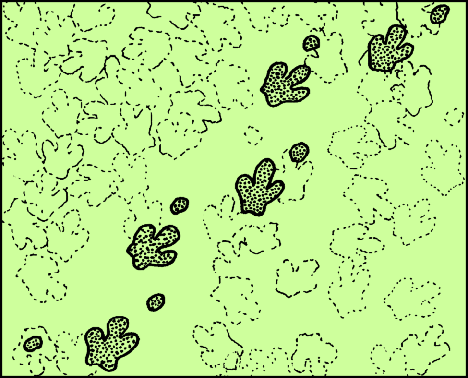  Are some tracks more important or better than others? The answer is Yes! What makes one track or trackway better than another, in the vast majority of cases, is that it is better preserved. Good preservation is important for a number of reasons, but mainly to ensure that trackers derive accurate information on foot shape and other trackway parameters. In fact, several trackers have stressed that new track types should only be named in cases for which adequate supplies of well-preserved material are available for study and for which accurate measurements can be taken. If tracks are poorly preserved, they may provide misleading information on foot size and shape, step lengths, and trackway widths that in turn may lead to dubious interpretations. Ichnologists have also noted this problem of differential quality of preservation in the study of invertebrate trace fossils. In many cases several generations of burrows are superimposed one on another in a single layer of strata. Some, usually the older burrows, are very indistinct, whereas others, presumably those made most recently, are clear. Clear burrows that are superimposed on older traces, or traces that have been better preserved in some way, are called "elite trace fossils." Exactly the same thing has been observed in vertebrate paleontology in the study of fossil footprints. Particularly on surfaces that have been extensively trampled, the first-formed (oldest) tracks are often obscure because they have been damaged by exposure to more trampling and more weathering. By contrast, the most recently formed (youngest) tracks on the same surface will stand out clearly. Such footprints can be called "elite tracks." Trackers should not be elitist, however. We must not ignore tracks that are poorly preserved. They may not be identifiable today, but experience may help us to identify them in the future. And even poorly preserved tracks may offer some new information, ecological if not taxonomic, to the overall picture. Poorly preserved tracks may also be very useful in sedimentological studies of ancient substrate conditions. However, when it comes to naming tracks and conducting detailed biological analyses, elite tracks are clearly preferable. |